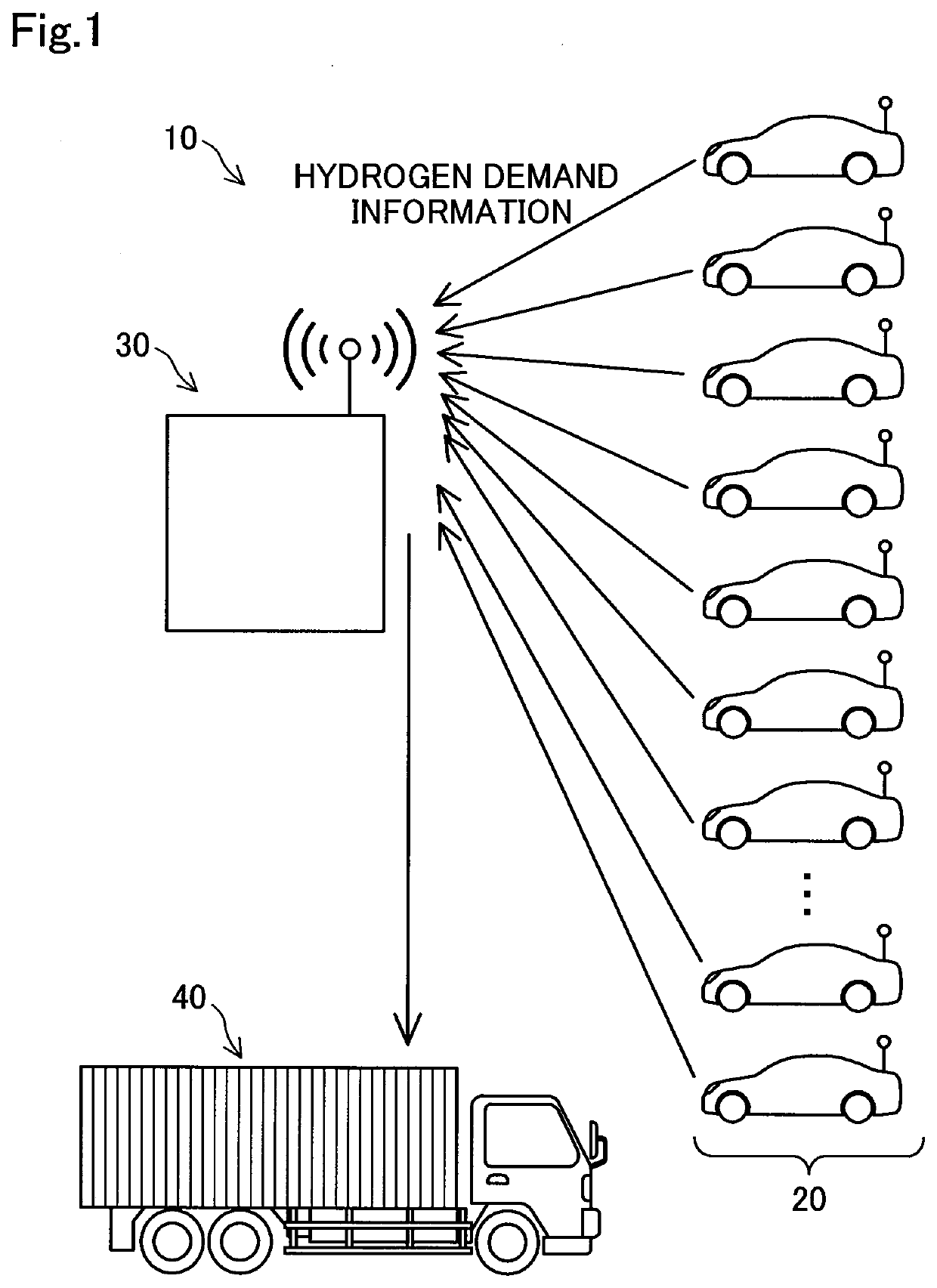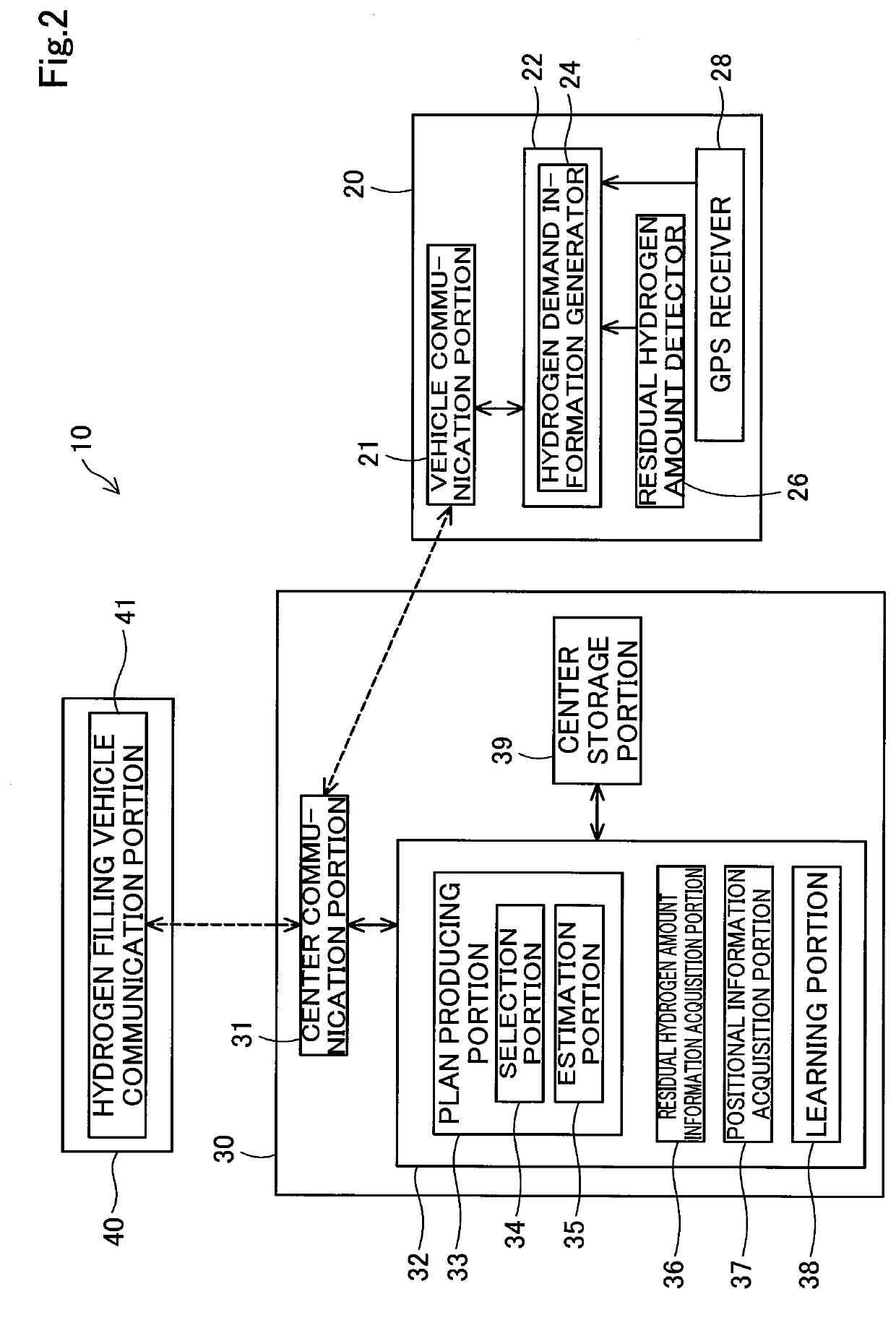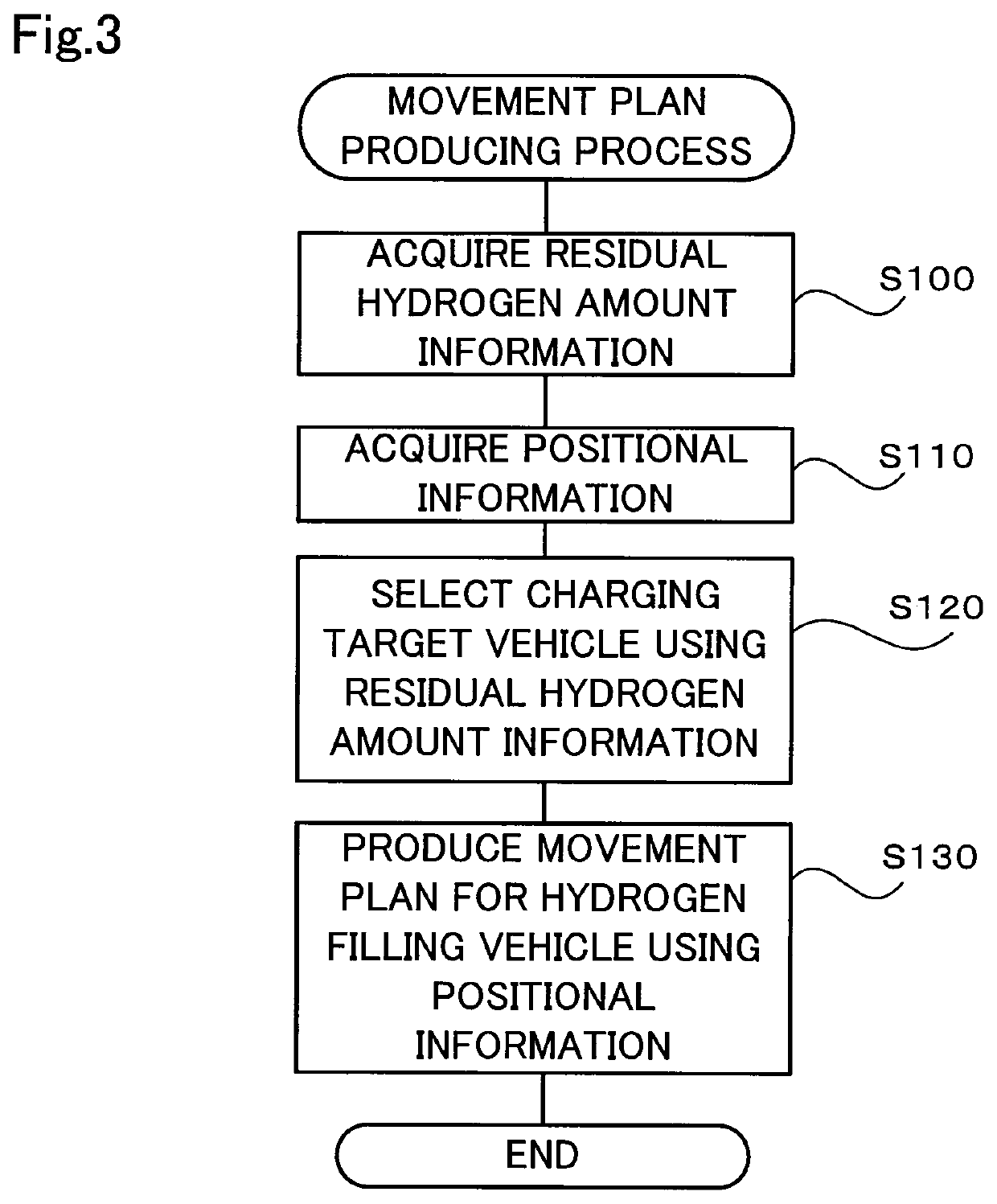Movement plan producing system and movement plan producing method for hydrogen filling vehicle
- Summary
- Abstract
- Description
- Claims
- Application Information
AI Technical Summary
Benefits of technology
Problems solved by technology
Method used
Image
Examples
first embodiment
A. First Embodiment
[A-1] Overall System Configuration
[0012]FIG. 1 is an explanatory view schematically showing the configuration of a hydrogen charging system 10 including a movement plan producing system 30 according to a first embodiment of this disclosure. FIG. 2 is an explanatory view showing functional blocks of the hydrogen charging system 10. The configuration of the hydrogen charging system 10 will be described below using FIGS. 1 and 2. The hydrogen charging system 10 of the first embodiment includes a plurality of vehicles 20, a hydrogen filling vehicle 40 for filling at least some of the plurality of vehicles 20 with hydrogen, and the movement plan producing system 30 that makes a movement plan for the hydrogen filling vehicle 40.
[0013]The vehicle 20 is a fuel cell vehicle with a fuel cell installed as one of driving energy sources. The vehicle 20 includes a hydrogen tank storing hydrogen to be supplied to the fuel cell. The vehicle 20 has a function of communicating with...
second embodiment
B. Second Embodiment
[0041]FIG. 4 is an explanatory view showing functional blocks of a hydrogen charging system 110 according to a second embodiment. In the second embodiment, a part common to that of the first embodiment will be given the same reference number and will not be described in detail. The hydrogen charging system 110 of the second embodiment performs an authentication process when a charging port lid covering a charging port formed at a vehicle body surface is to be unlocked for connecting the hydrogen tank of the vehicle 20 and the hydrogen filling vehicle 40. The following description is intended for differences of the hydrogen charging system 110 from the hydrogen charging system 10 of the first embodiment.
[0042]In the second embodiment, the center processor 32 of the movement plan producing system 30 further includes an authentication information acquisition portion 60 and an authentication information transmission portion 62. The authentication information acquisit...
third embodiment
C. Third Embodiment
[0050]FIG. 6 is a flowchart showing a routine of a movement plan producing process executed by the CPU of the center processor 32 of a third embodiment. The movement plan producing process of the third embodiment differs from that of the first embodiment in a criterion for selecting a charging target vehicle. More specifically, the movement plan producing process of the third embodiment differs from the movement plan producing process of the first embodiment shown in FIG. 3 in that step S125 is performed instead of step S120. Other procedures of the movement plan producing process and other device structures of the third embodiment are the same as those of the first embodiment. Thus, a common step and a common constituting element are identified by the same signs and will not be described in detail. The following description is intended for differences of the movement plan producing process of the third embodiment from the movement plan producing process of the fi...
PUM
 Login to View More
Login to View More Abstract
Description
Claims
Application Information
 Login to View More
Login to View More - R&D
- Intellectual Property
- Life Sciences
- Materials
- Tech Scout
- Unparalleled Data Quality
- Higher Quality Content
- 60% Fewer Hallucinations
Browse by: Latest US Patents, China's latest patents, Technical Efficacy Thesaurus, Application Domain, Technology Topic, Popular Technical Reports.
© 2025 PatSnap. All rights reserved.Legal|Privacy policy|Modern Slavery Act Transparency Statement|Sitemap|About US| Contact US: help@patsnap.com



